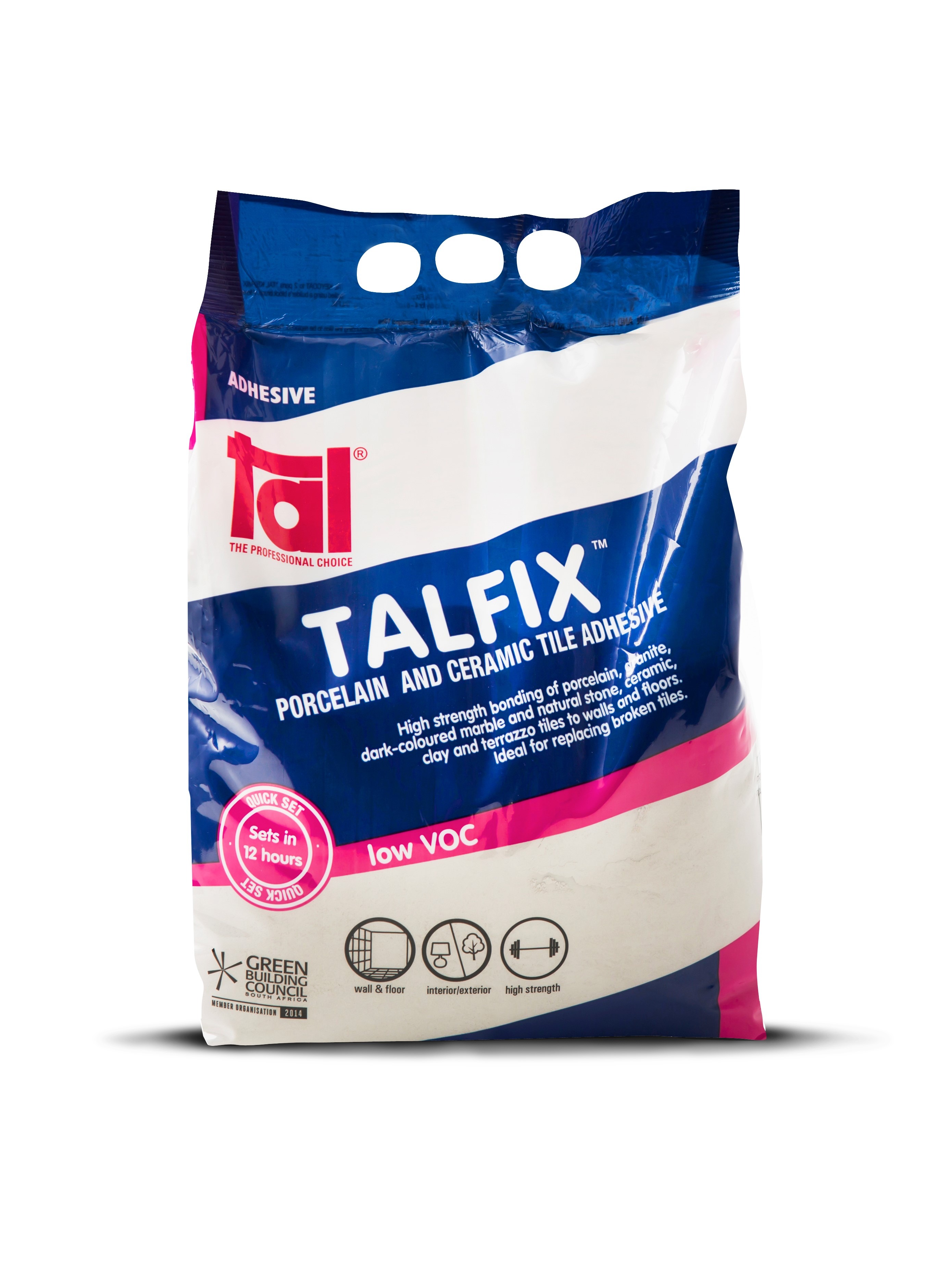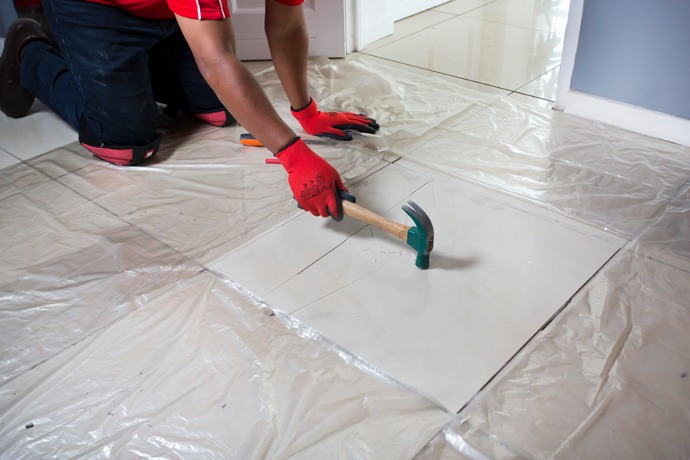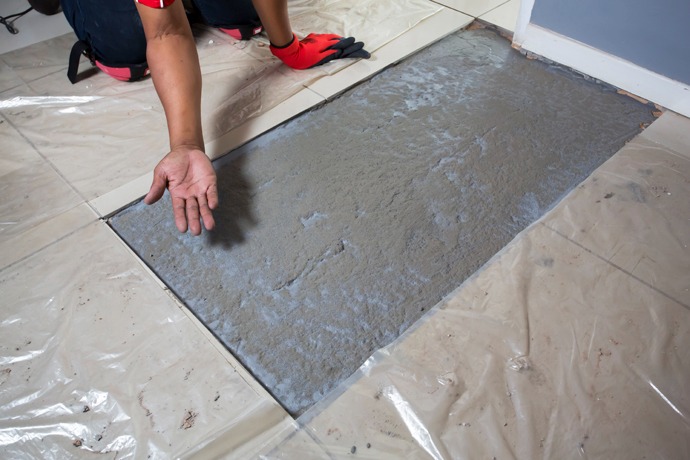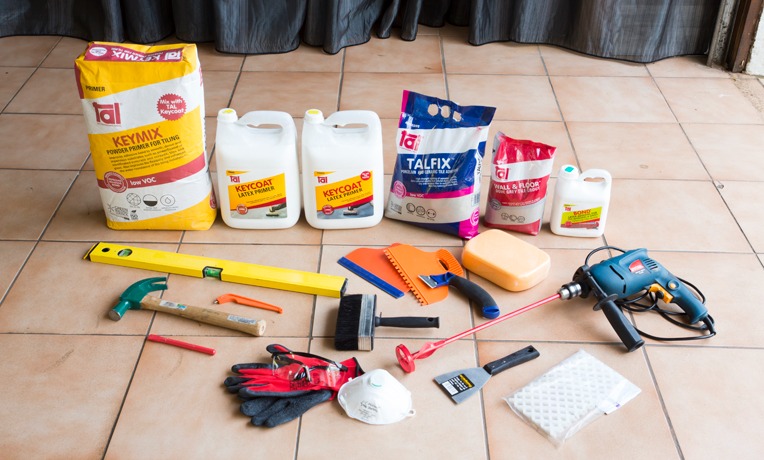TAL launches Talfix, a tile adhesive ideal for remedial tiling projects
TAL has introduced TALFIX to their tile adhesive product range. The new TALFIX is available in a handy 5kg pack, ideal for remedial work such as replacing cracked or broken tiles, and smaller DIY installations.
Suitable for fixing ceramic, porcelain and dark-coloured natural stone tiles to walls and floors, TALFIX is quick-setting and designed for ease of use with a 4-hour pot life. Tiles can be grouted after 6 – 8 hours, and trafficked 12 hours after installation.
TALFIX can be applied in thicknesses between 5mm-12mm and in isolated areas, up to 20mm. For all exterior/exposed and “wet” applications, high traffic areas, areas subjected to thermal stresses or temperature changes, or where some flexibility is required, replace the water in the mix with TAL Bond. Alternatively, TAL Bond Powder may be added to the adhesive mixing water.
When used in conjunction with 1L TAL Bond and 2kg Wall and Floor Grout, TALFIX is a complete tile replacement installation solution.


Check the surrounding tiles, if they sound hollow you may have a bigger problem and should consider getting professional advice.


Ideally you will have spare tiles saved from when you tiled originally, which can now be used as replacements for tiles that are damaged over time. Otherwise, look for a similar tile that will blend in with the existing tiles.


If you know the original grout brand and colour, use it. Or try to make a match as best as you can to the existing grout.


Start by removing the grout from around the cracked tile using a grout rake. Carefully rub the blade back and forth in the middle of the grout joint being careful to avoid touching the edges of the tiles. Remove the grout all the way to the substrate.


Once the grout has been removed, cover the surrounding tiles to protect them, then break the damaged tile with a hammer and remove the fragments with a chisel. Work from the centre out to avoid damaging the surrounding tiles.




Next, remove any adhesive that remains on the substrate and make sure the surface is clean and dry.


Working carefully, remove the grout that remains attached to the sides of the adjacent tiles using a small chisel and hammer.


Prime the cleaned area with a slurry of TAL Keycoat and TALFIX or TAL Keymix.


When the slurry is touch dry you can install the replacement tile.


Use TALFIX, which is available in a handy 5kg bag, ideal for small projects like this. Pour 1.25 L of TAL Bond into a bucket then add the 5kg bag of TALFIX. Mix with a mechanical mixer to a creamy, lump-free consistency. Wait for 3-5 minutes and mix again.




When replacing tiles, it is not always possible to apply the TALFIX directly to the floor, in which case apply the adhesive in a solid bed onto the back of the tile, ensuring complete coverage. Gently trace the notched side of a floor trowel through the adhesive to create ‘ridges’.


Position the tile in place, pressing down firmly. Use a spirit level to check that the face of the replacement tile is flush with the surrounding tiles.


Be sure to scrape any excess adhesive out of the joints between the tiles before the adhesive dries. Allow the adhesive to dry for at least 6-8 hours before grouting.
Apply grout to the grout joints with a squeegee.


Leave to set fully before walking over the replacement tile.


All installation materials for this repair are available from leading tiling retailers and hardware stores nationwide.


For more information contact a TAL Expert on 0860 000 TAL (825) or watch our how-to videos on YouTube.


The alternative is to use small sections of various colours, hues or materials, rather than a full installation. With little effort, the use of these sections or full mosaic sheets between other tiles can really accentuate a space. It’s this technique as well as the use of colour that will dominate future tiling trends.
Do you have what you need?
Now that you have a view of some of the most popular layouts used in the industry, you’re almost ready to go. Before you do, it’s important you use the right materials and equipment to ensure the best results the first time around. Different types of tiles, as well as where they’re being installed, will dictate which adhesive system is required – each fulfilling a specific function.
Should you need DIY advice, or assistance with substrate preparation, screeding, tiling installation or waterproofing, we’ve put together a comprehensive selection of guides for you. Check out any one of our tiling-made-easy guides. Remember, the choice of grout colour also significantly impacts the overall aesthetic. Consult our grout colour chart to make sure you enhance your look.
For technical advice please contact our experts on 0860 000 TAL (825) or email: [email protected]
Photo credits: www.johnsontiles.co.za